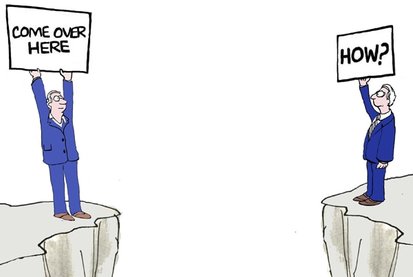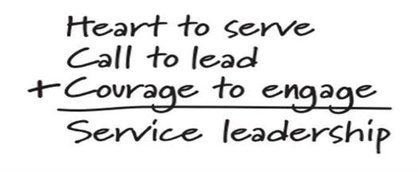Communications Leadership Project and Competencies
Communications Audit
PROJECT SUMMARY
One of the core courses in the Organizational Leadership program at Gonzaga is Organizational Communications. The course looked at different organizational theories in relationship to communication structures. As part of the course, I created a communications audit of the Interfaith Council of Southern Nevada (IFCSN); I was surprised by my findings in the audit, which inspired me to implement strategies to improve the communication structures of IFCSN's network organization.
Additionally, my overall focus was to look more deeply at network organizations and their communication challenges. Network organizations have four major components: flexible structures that can be readily reconfigured, team-based work organization with an emphasis on autonomy, flat organizational structures that rely on coordination and negotiation, and the use of ICTs to work across organizational functions.
METHODOLOGY
Three methods were used in the audit: an employee survey, a network analysis, and observation. A copy of the employee survey used in this analysis is included here: ifcsn_audit_questionnaire.docx
COMMUNICATION STRUCTURES
The audit revealed the following communication structures:
One of the core courses in the Organizational Leadership program at Gonzaga is Organizational Communications. The course looked at different organizational theories in relationship to communication structures. As part of the course, I created a communications audit of the Interfaith Council of Southern Nevada (IFCSN); I was surprised by my findings in the audit, which inspired me to implement strategies to improve the communication structures of IFCSN's network organization.
Additionally, my overall focus was to look more deeply at network organizations and their communication challenges. Network organizations have four major components: flexible structures that can be readily reconfigured, team-based work organization with an emphasis on autonomy, flat organizational structures that rely on coordination and negotiation, and the use of ICTs to work across organizational functions.
METHODOLOGY
Three methods were used in the audit: an employee survey, a network analysis, and observation. A copy of the employee survey used in this analysis is included here: ifcsn_audit_questionnaire.docx
COMMUNICATION STRUCTURES
The audit revealed the following communication structures:
- The employee survey and network analysis revealed there was some satisfaction with the current communication structures.
- All three methods revealed the flow of information through the organization functioned as an informal network.
- All four major components of network organizations were present in IFCSN.
- Questionnaire responses and observation revealed ineffective communication structures existed and more attention to motivation and control within a network organization was needed.
Recommendations and Strategies
FINDINGS AND RECOMMENDATIONS
The findings of the audit revealed that the largest impact of recommended changes comes from the accounting information systems and communications systems.
EXTERNAL COMMUNICATIONS
The following recommendations were necessary to improve the efficacy of the external communications of the organization:
The findings of the audit revealed that the largest impact of recommended changes comes from the accounting information systems and communications systems.
EXTERNAL COMMUNICATIONS
The following recommendations were necessary to improve the efficacy of the external communications of the organization:
- Update the website by checking the information is correct and the links and forms work.
- Create business cards and brochures for staff and board members so that they can easily direct people to the website and social media resources.
- Establish a database that makes the management of information, financial data, and human resources easier and more effective.
- Provide a social media platform to replace the email platform that was becoming overwhelmed by emails. A closed Facebook group or data management software would be useful in this instance.
- Recruit external volunteers to help with external communications such as data input and social media.
INTERNAL COMMUNICATIONS
Recommendations for internal communications began by looking at the flow of information through the network. If the majority of the information of the network flows through one person, the information from that person needs to be shared consistently through the network. Focus was on the electronic methods used and the main people involved in communications. The following recommendations were used to improve the efficacy of the internal communications within the organization:
Recommendations for internal communications began by looking at the flow of information through the network. If the majority of the information of the network flows through one person, the information from that person needs to be shared consistently through the network. Focus was on the electronic methods used and the main people involved in communications. The following recommendations were used to improve the efficacy of the internal communications within the organization:
- Establish a software database system that proves a way to track information of members, donors, and information that can be accessed by multiple users.
- Utilize social media platforms to streamline communication for events or board internal communications
- Transfer relationship network information from the primary board member to the database and staff members so multiple people have access to the information
Project Implementation and Evaluation
IMPLEMENTATION
Over the course of six months, I utililized the information from the communication audit to implement changes within the organization. Since I was the only remaining paid employee, much of the work fell on my shoulders. I collaborated with board membership as well as took leadership of the project.
We created the following improvements to IFCSN's external and internal communications:
EVALUATION
I evaluated the efficacy of the communication changes through informal interviews, observations, and morale of the organization. Multiple board members commented on how nice it was that information was getting disseminated throughout the organization more effectively. Observations included watching board members utilize the close Facebook group to improve their communications. Additional observations included seeing an increase in attendance to the monthly community discussion meeting. Morale improved as more people within the organization could access information. In the past, the former camp director had written grants that the former executive director never submitted. Being able to share information with the current camp director as well as have updated financial and legal documents, we were able to obtain the Clark County Outside Agency Grant for $10,000 for Camp Anytown. It improved morale with the camp staff to be effective in fundraising the organization, which was made possible by shared information and recreating financial and legal records.
LESSONS
I learned the importance of good communication in organizational success through this project. With current technology, communication has become easier than it was in the past, but the technology can only go as far as the people in the organization are willing to embrace it. I have learned that just because a technology is there, does not mean it is a good fit for the organization.
Additionally, I learned that where communication flows in the organization tells a story about the values of the people within the organization. Communication gives a snapshot, so to speak, of who's in charge of an organization and what information is deemed to be important to share or not share. I also learned to ask more questions and be more of an observer in organizational dynamics because it is easy to get caught in the dynamics instead of having the vision to see dynamics in a different way.
In the Foresight and Strategy course, we learn to listen to collective intelligence and move in the direction of the emerging future, but the ability to move with foresight requires an understanding of the systems view of organizations. Information and ideas are only as good as our ability to communicate them through the existing structures within an organization. Without the ability to communicate effectively within an organization, the best ideas flounder and fall short of what they are capable of evolving into. This course and this project taught me that without good communication, it is difficult to inspire growth in organizations.
Over the course of six months, I utililized the information from the communication audit to implement changes within the organization. Since I was the only remaining paid employee, much of the work fell on my shoulders. I collaborated with board membership as well as took leadership of the project.
We created the following improvements to IFCSN's external and internal communications:
- I worked with the board president and a long term board member to determine who was actually on the board of directors.
- I assisted the board president in recruiting candidates for board executive leadership positions, which created process of future board leadership as well as a committee for recommendations for action.
- I updated the website to make certain that all links worked including online PayPal and social media links. I rewrote a few of the descriptions for the events to make them more clear in our marketing. There was insufficient time to complete a full website upgrade. www.interfaithsn.org
- To streamline communications with the Camp Anytown staff, I created the first online application for their program which removed manual input of database information for applicants. It also gave IFCSN and camp staff access to the same database of information.
- I created an online form within the website that automatically uploaded volunteer application information.
- I created business cards for the staff and board president that included social media links.
- I created updated brochures and donor packets for both Camp Anytown promotion as well as IFCSN's work.
- I started Meetup to promote events on a new social media platform and began advertising on Natural Awakenings Magazine which increased attendance at the monthly community discussion meeting; I also updated IFCSN's Facebook descriptions making the links more readily available for promotions.
- I tried a number of CRM systems, but without available funds to make an investment, I returned to using the existing Constant Contact program. However, I updated the marketing on the emails with a fresh look and descriptions.
- I created a closed Facebook group for the IFCSN's board to relay information and have an easier way for them to share events with each other, which flattened the hierarchical flow of information through a central person.
- I moved all documentation onto an online Microsoft Office subscription, which made sharing of documents and information seamless for staff and executive board. All financial bookkeeping could be tracked by the treasurer and board president.
- Major documentation was missing from a stolen computer. So I recreated the financial records of the past few years as well as found copies of our important legal documents. This enabled me and the camp director to successfully apply for grant funding.
EVALUATION
I evaluated the efficacy of the communication changes through informal interviews, observations, and morale of the organization. Multiple board members commented on how nice it was that information was getting disseminated throughout the organization more effectively. Observations included watching board members utilize the close Facebook group to improve their communications. Additional observations included seeing an increase in attendance to the monthly community discussion meeting. Morale improved as more people within the organization could access information. In the past, the former camp director had written grants that the former executive director never submitted. Being able to share information with the current camp director as well as have updated financial and legal documents, we were able to obtain the Clark County Outside Agency Grant for $10,000 for Camp Anytown. It improved morale with the camp staff to be effective in fundraising the organization, which was made possible by shared information and recreating financial and legal records.
LESSONS
I learned the importance of good communication in organizational success through this project. With current technology, communication has become easier than it was in the past, but the technology can only go as far as the people in the organization are willing to embrace it. I have learned that just because a technology is there, does not mean it is a good fit for the organization.
Additionally, I learned that where communication flows in the organization tells a story about the values of the people within the organization. Communication gives a snapshot, so to speak, of who's in charge of an organization and what information is deemed to be important to share or not share. I also learned to ask more questions and be more of an observer in organizational dynamics because it is easy to get caught in the dynamics instead of having the vision to see dynamics in a different way.
In the Foresight and Strategy course, we learn to listen to collective intelligence and move in the direction of the emerging future, but the ability to move with foresight requires an understanding of the systems view of organizations. Information and ideas are only as good as our ability to communicate them through the existing structures within an organization. Without the ability to communicate effectively within an organization, the best ideas flounder and fall short of what they are capable of evolving into. This course and this project taught me that without good communication, it is difficult to inspire growth in organizations.
Servant-Leadership Competencies Used
The disposition of a servant leader is that a servant-consciousness is profoundly relational, creative, wholistic, and integrative. The following are a list of the capacities of a servant leader and how I exemplified the values and skills of servant-leadership in my communications project for the Interfaith Council of Southern Nevada.
CAPACITIES I DEMONSTRATED
1. A servant leader models a principle-centered empathic moral capacity
CAPACITIES I DEMONSTRATED
1. A servant leader models a principle-centered empathic moral capacity
- Accepted and delgated responsibilities in working with camp staff and board members
- Served with respect and compassion to the entire organization without judgement of existing communication structures
- Nurtured individual and collective intelligence by working with board members to determine who was on the board and develop a board executive team
- Nurtured a culture of belonging, commitment, and accountability by creating greater access to information through Microsoft Office and working with camp staff to successfully obtain a grant
- Practiced independence-interdependence by working diligently on the techonology of information sharing but also worked collectively to ensure that my choices were reflective of the needs of the members of the organization
- Showed appreciation, built trust, inspired confidence and dependability by being grateful for the opportunity to serve the organization as well as focus on building trust through community by improving communications
- Practiced wholistic listening by creating the communications audit that gave a space to listen to what was needed from the staff
- Practiced discernment by realizing that funding did not allow for large investments in database technology and by focusing on the best use of staff time on the project
- Practiced dialog (empathic and generative) by working with the leaders of each of the programs to determine how best to market their information
- Envisioned, conceptualized, and enacted the communication improvements in the network organization
- Used an adaptive wholistic framework by being flexible in how the communication structures were being implemented, which included board members having difficulty with Facebook as a means of communication
- Practiced servant-stewardship by determining the best use of the organizations funding towards communication improvements
- Thought and acted strategically by completing an effective audit and looking at the systems from the micro to the macro levels




